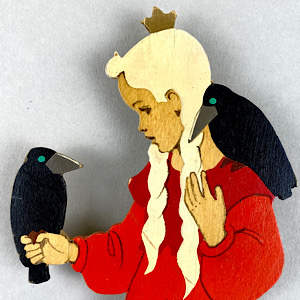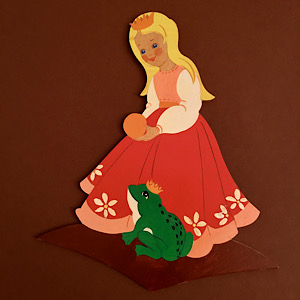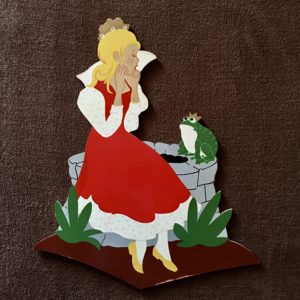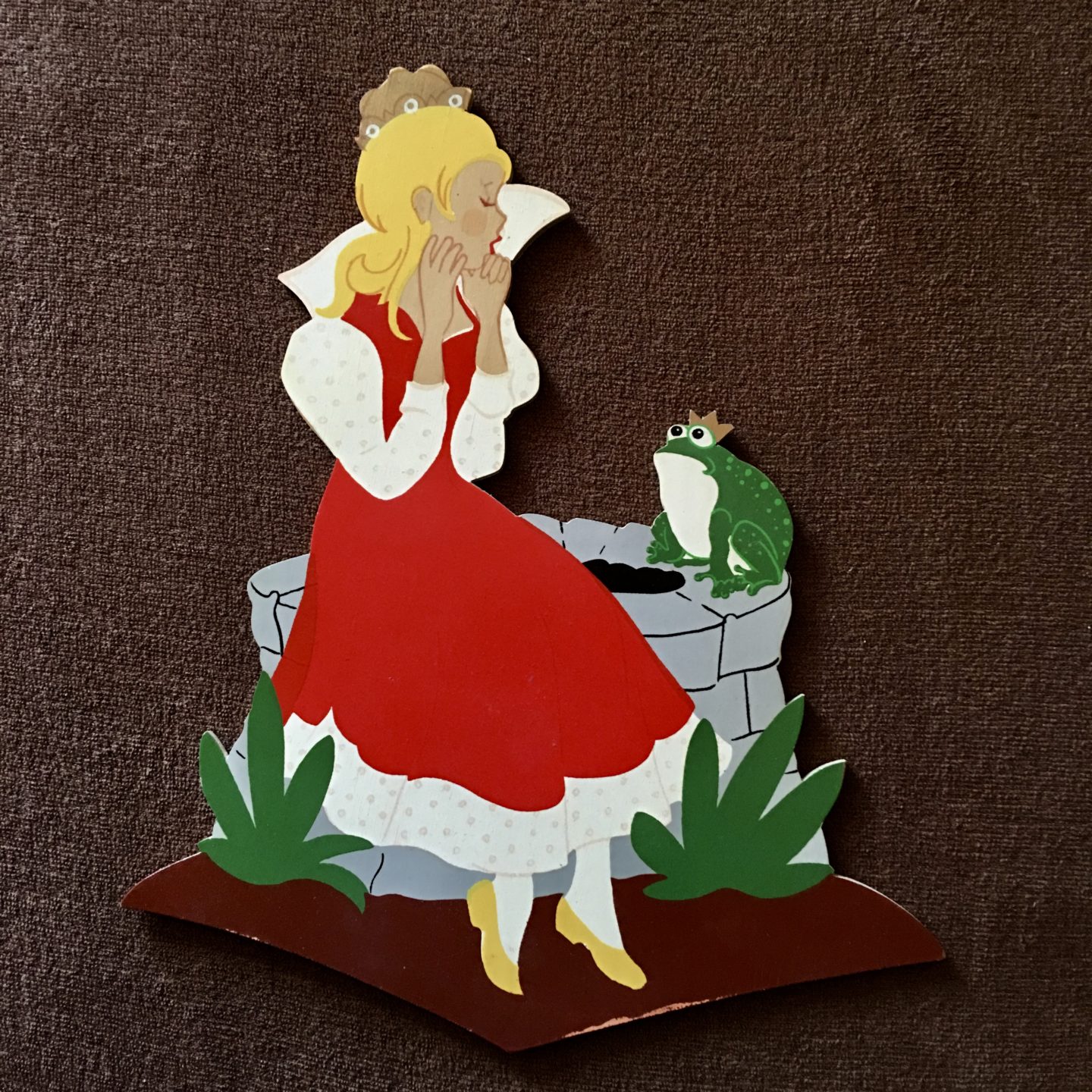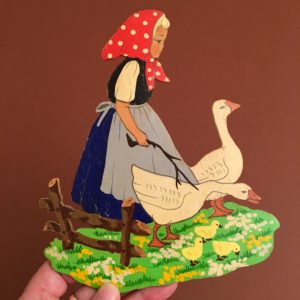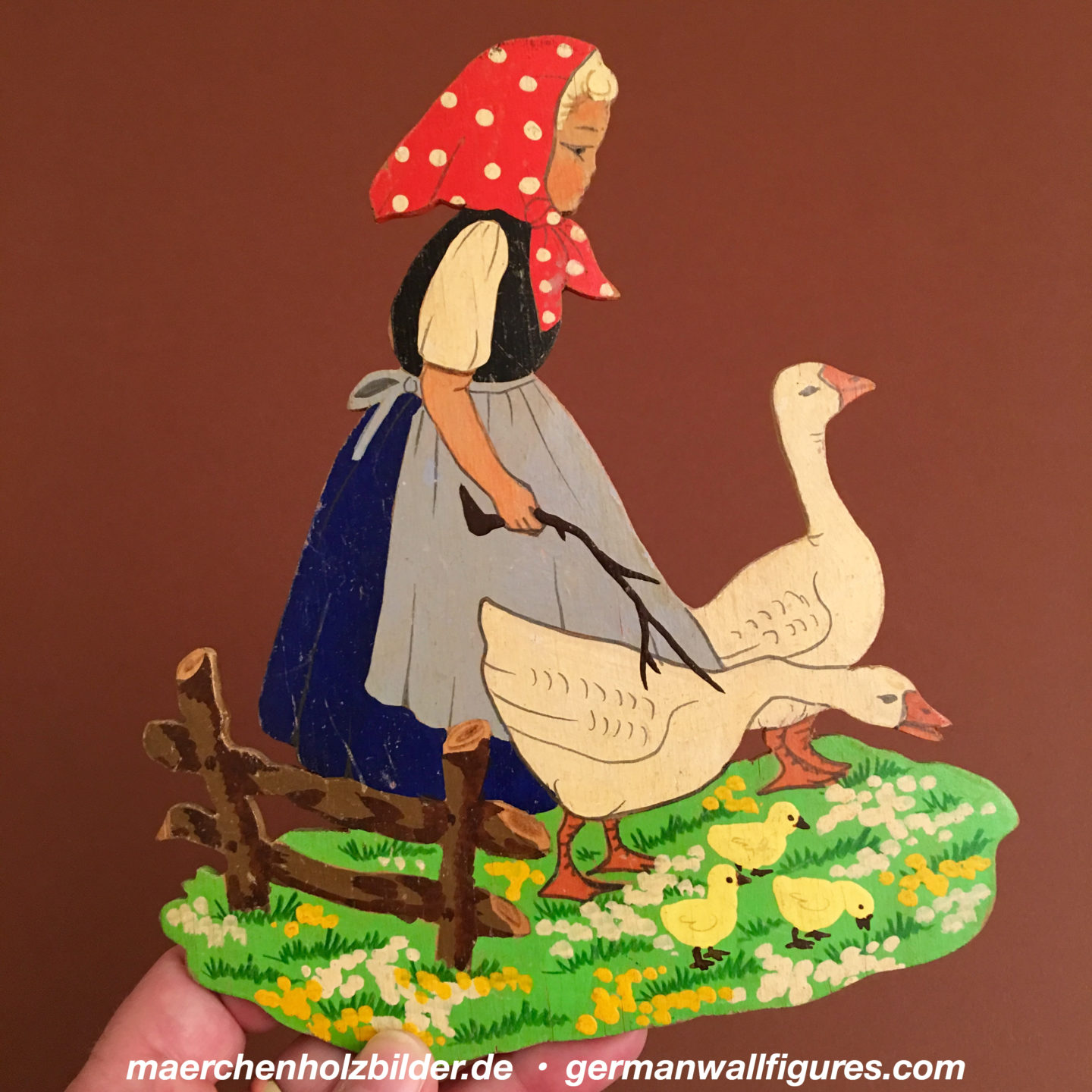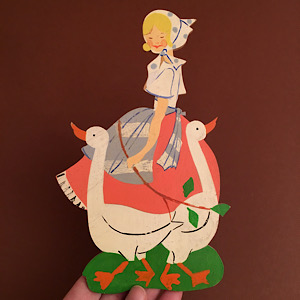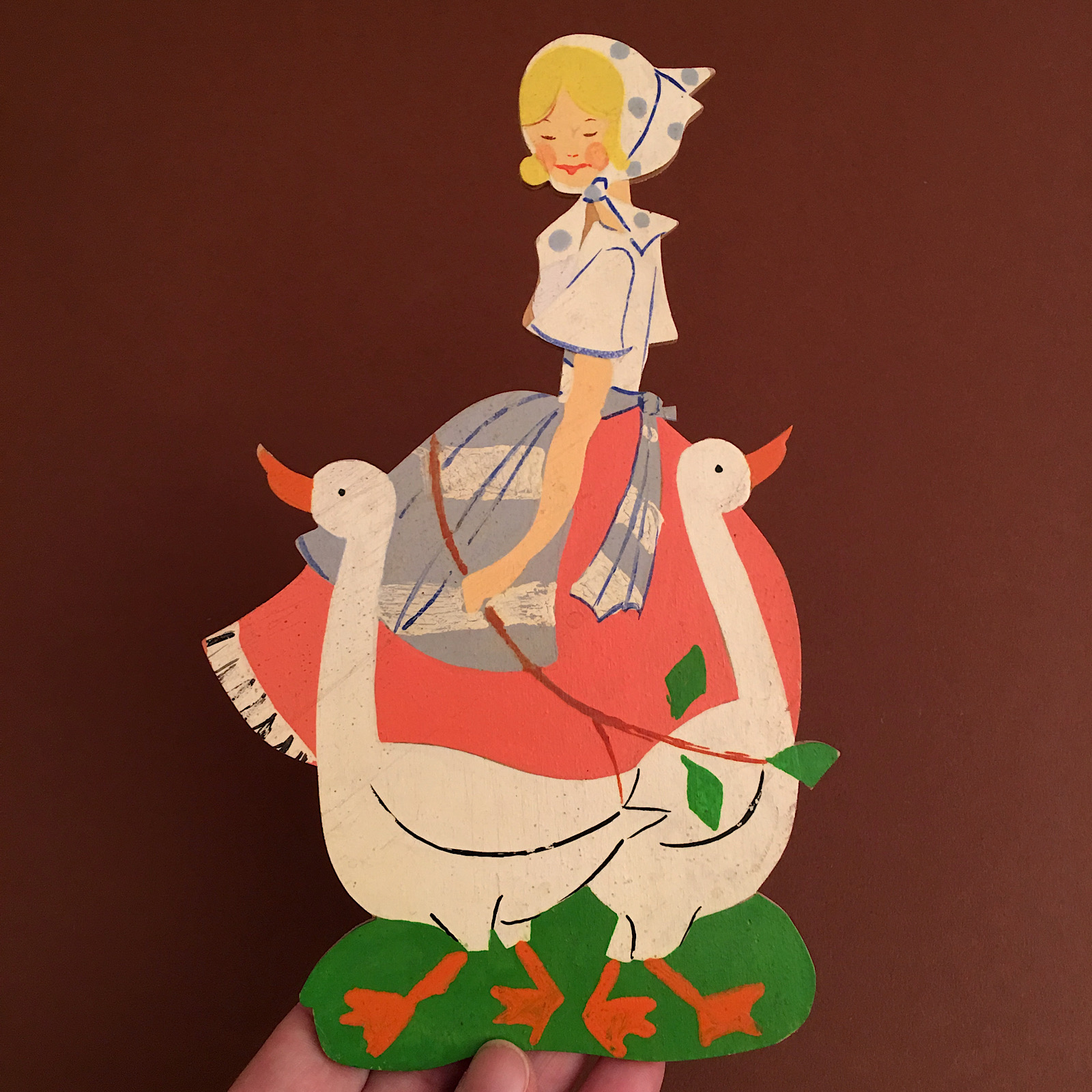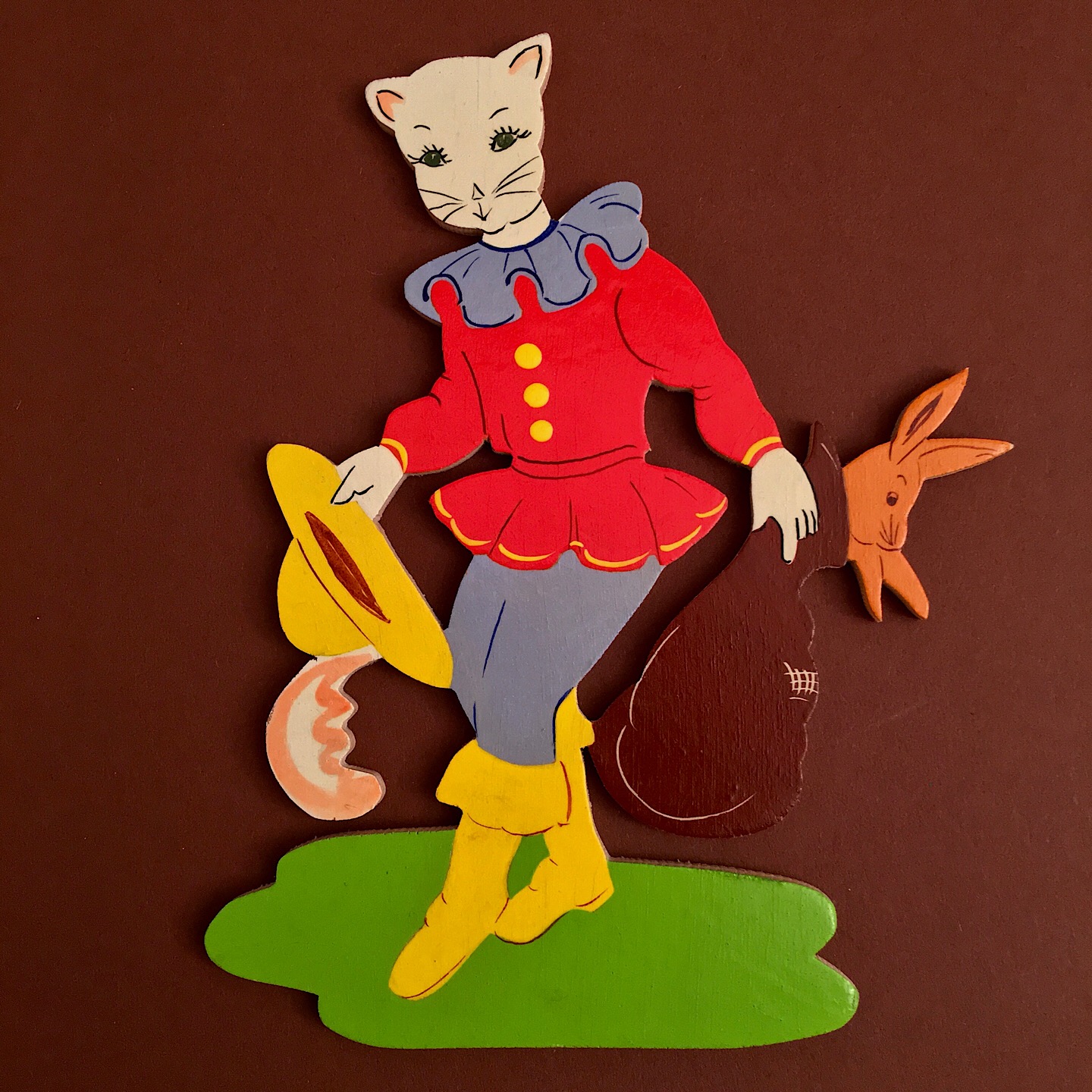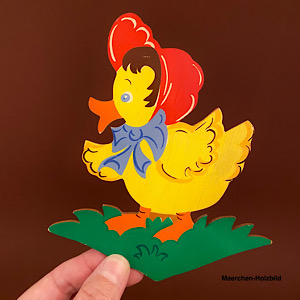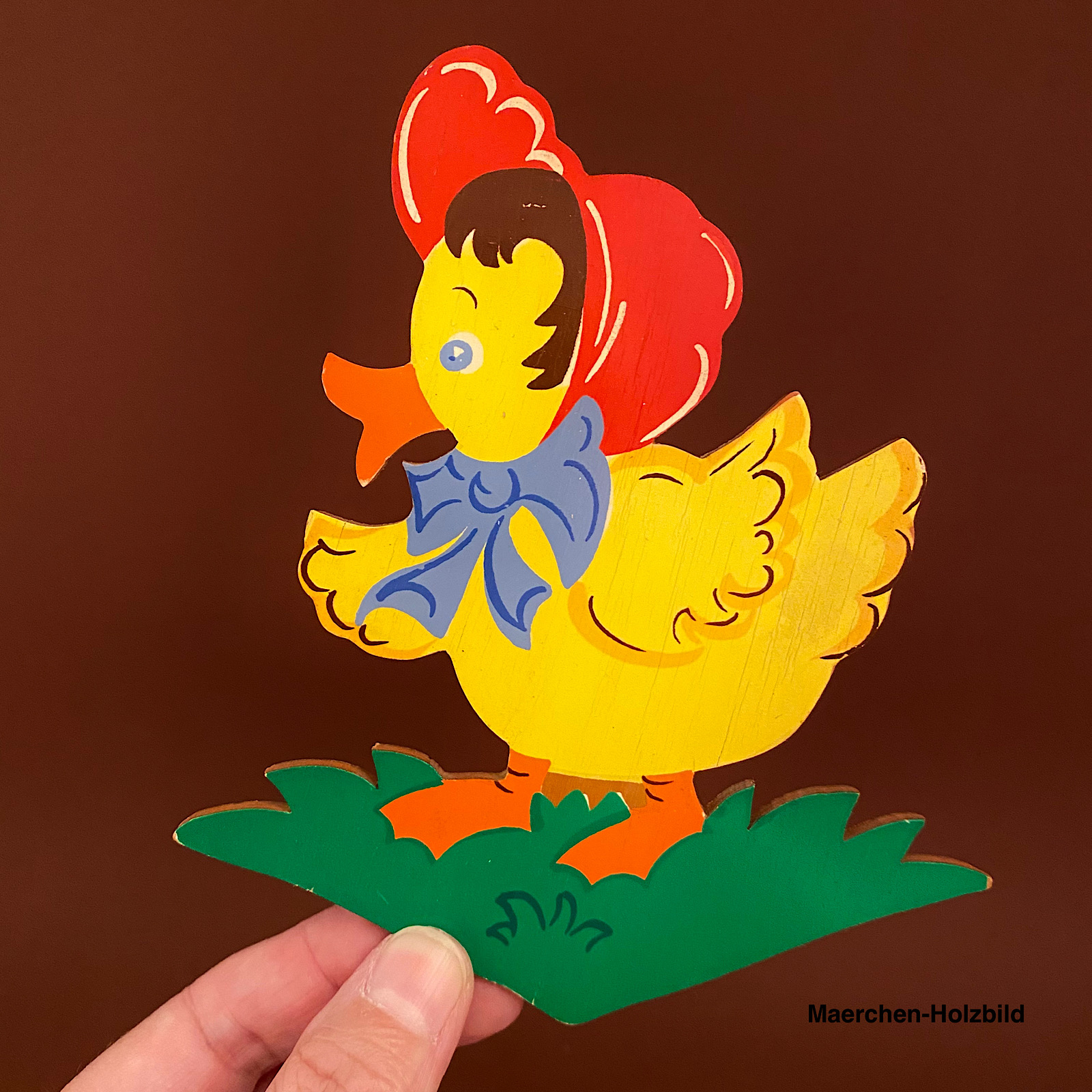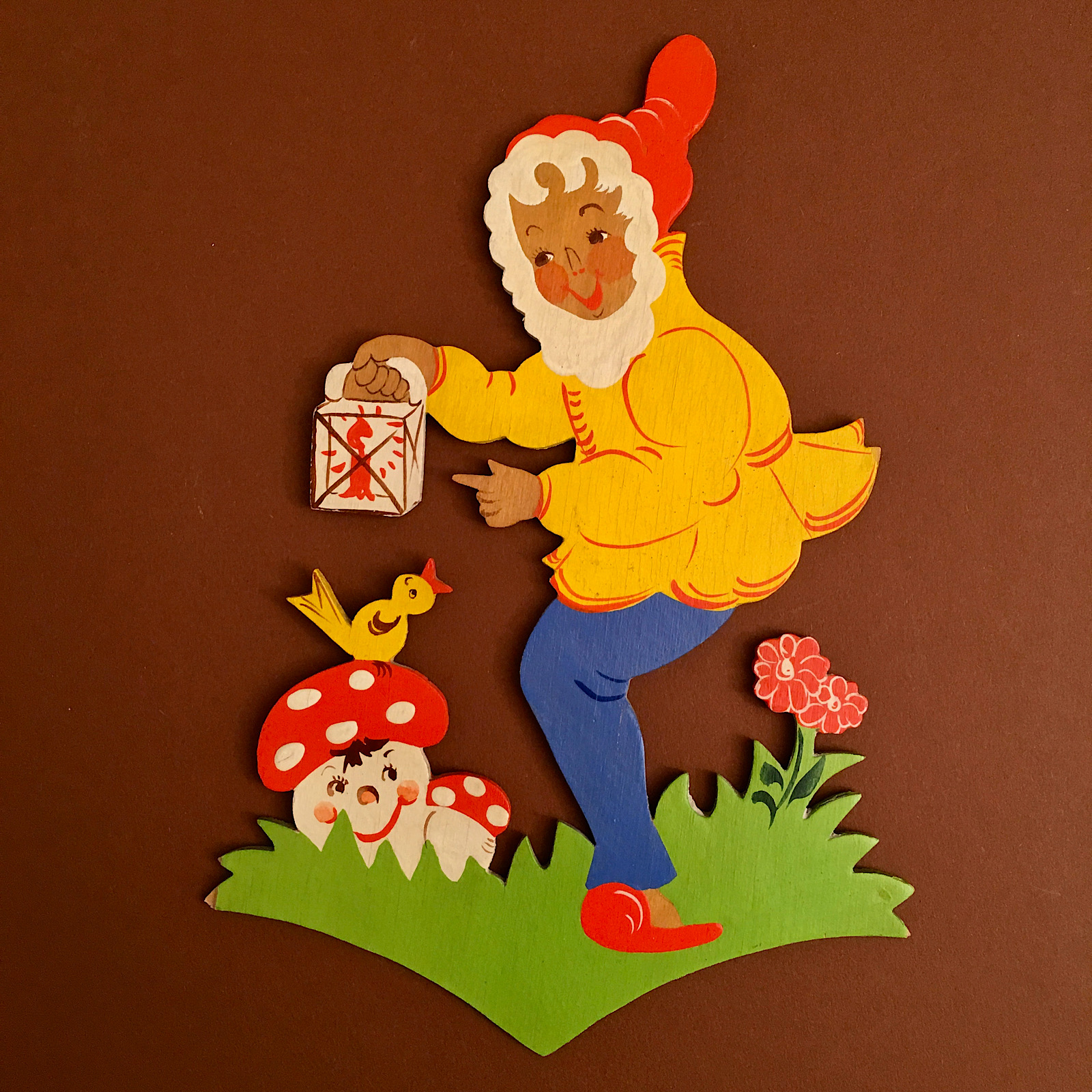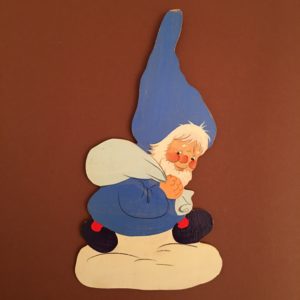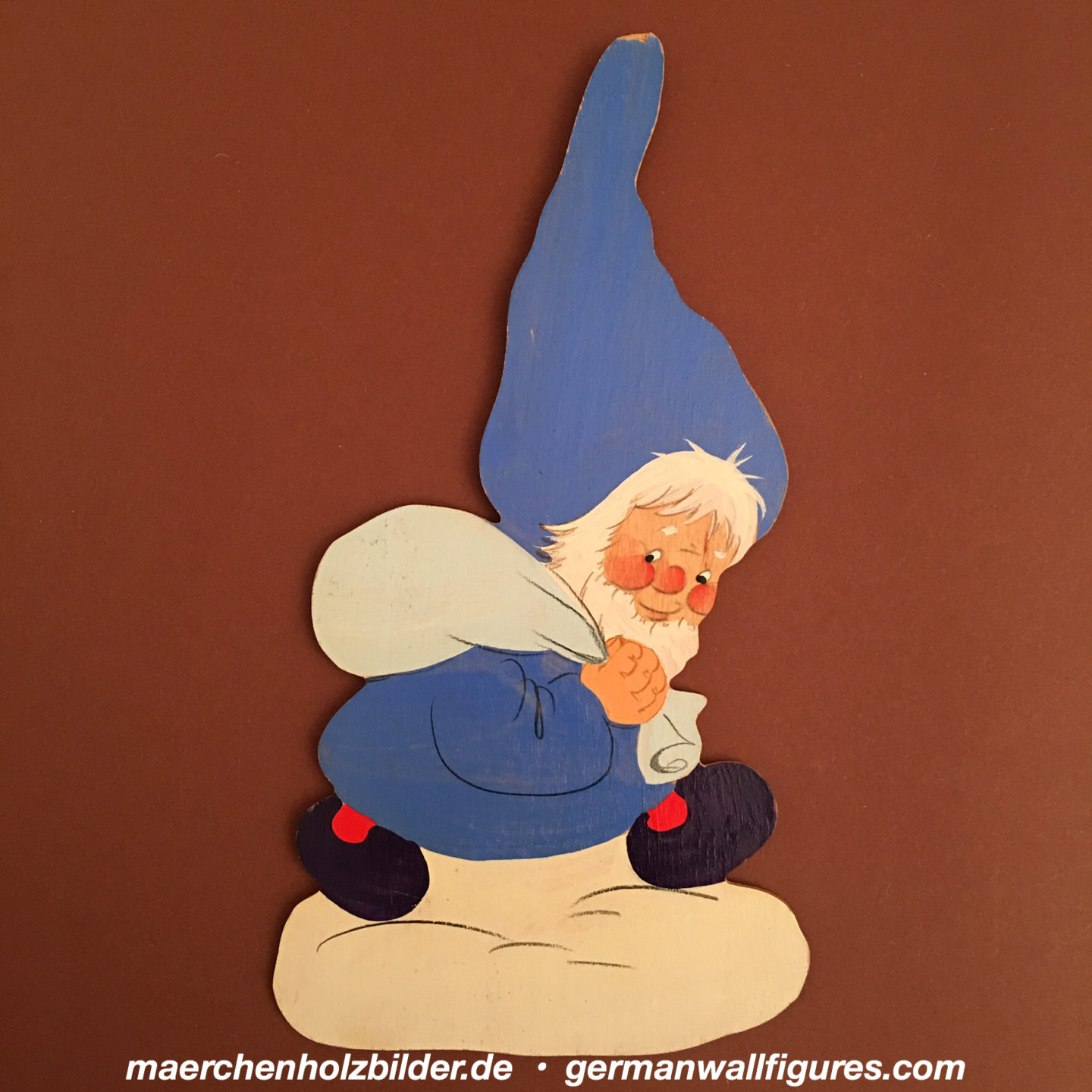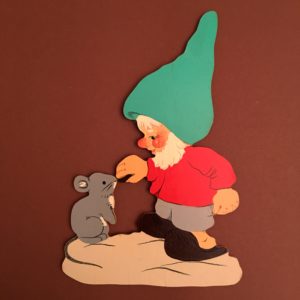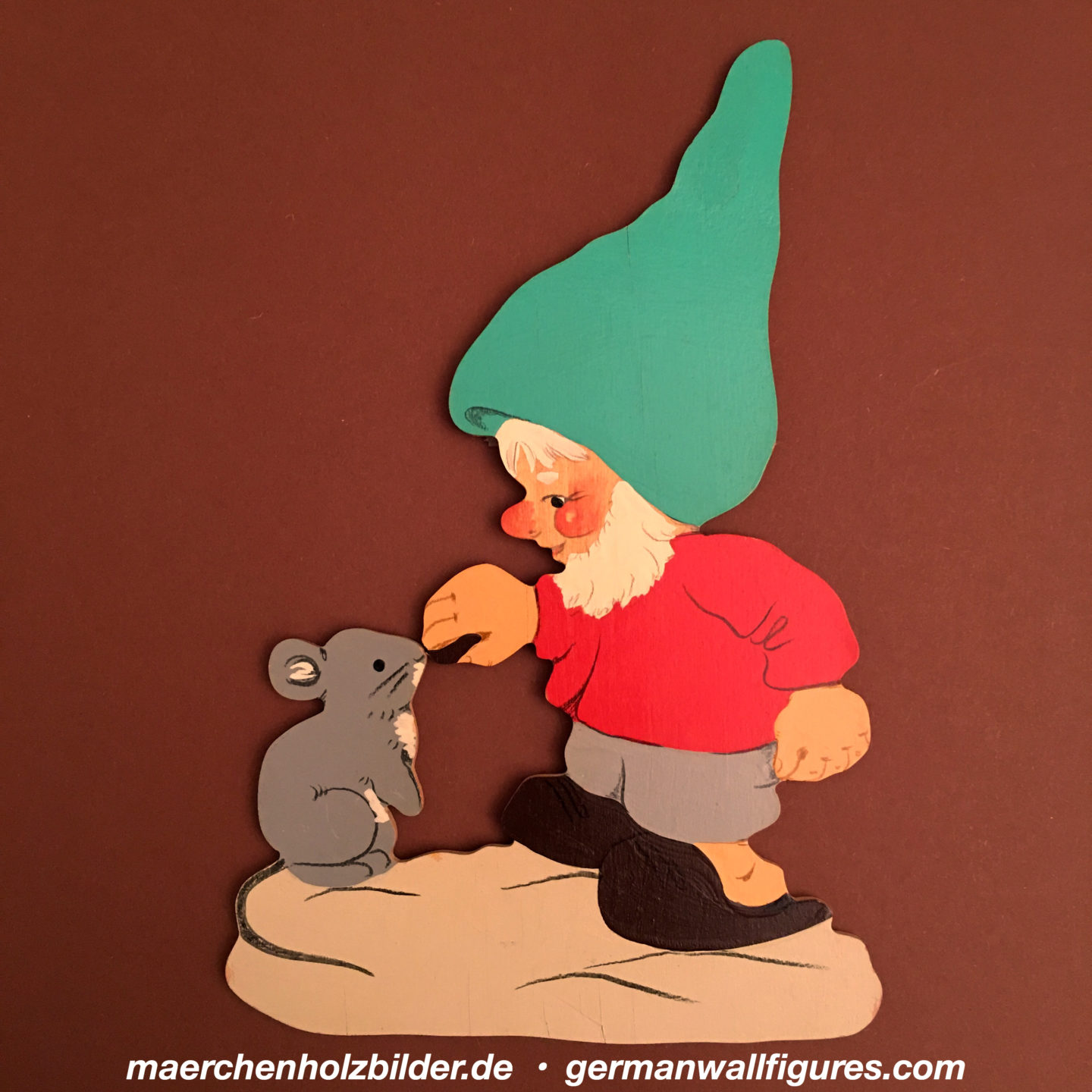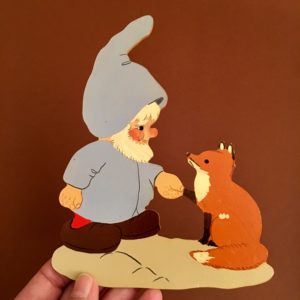1950er Original Bergischer Engel: Rosa Froschprinzessin mit Blumenrock, Handbemalt, Märchen-Holzbild 🇬🇧 1950s Original Bergischer Engel: Pink Frog Princess with Flower Skirt, Hand-painted, German Wall Figure
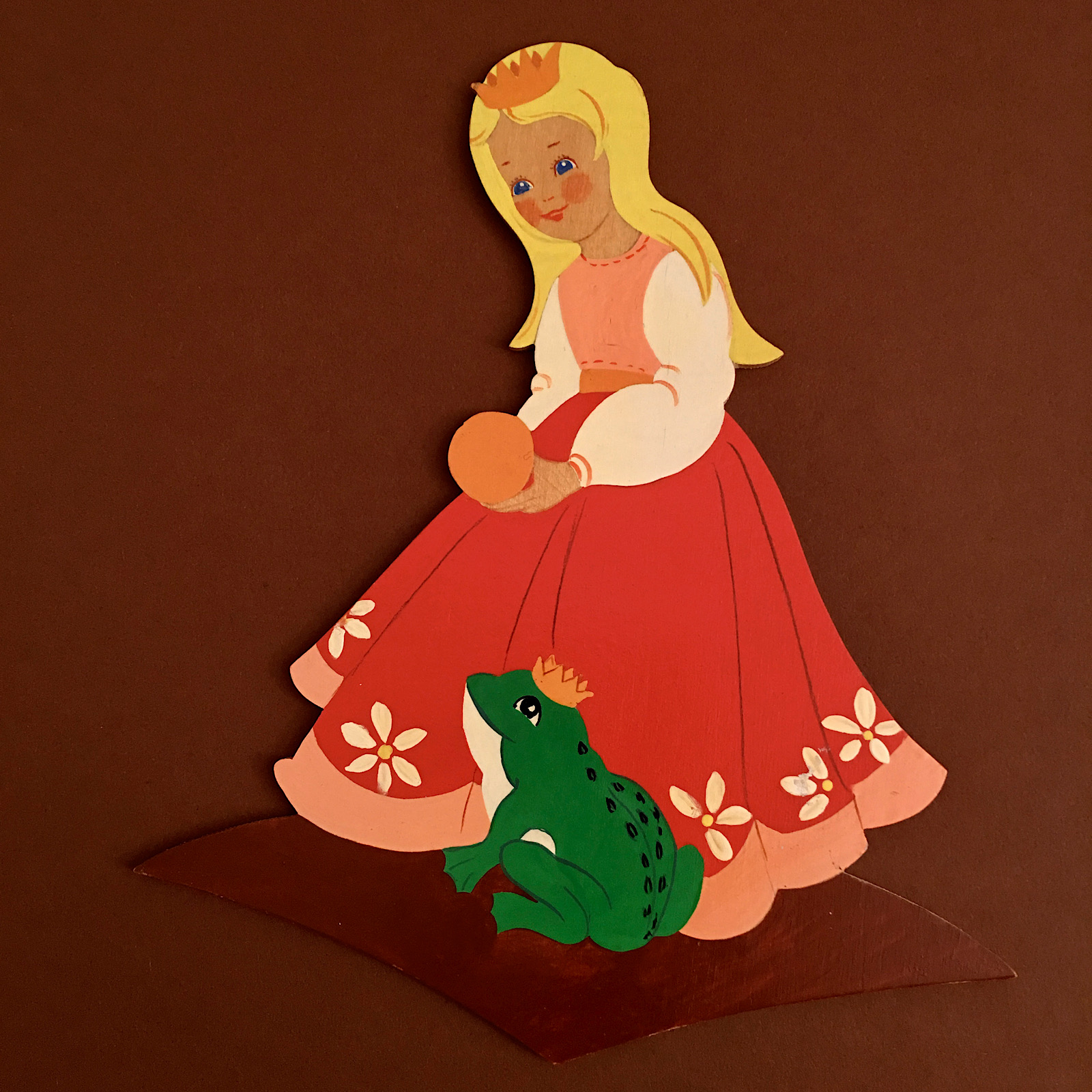
ORIGINAL BERGISCHER ENGEL, SIEBDRUCK: Johanna Gruner-Witkop, die erste Besitzerin des Original Bergischer Engel, erzählte mir im neuen Jahrtausend (in den 2010er Jahren), dass ihre Manufaktur um 1960 herum zwei Schritte der Neuerung bei ihren Wandfiguren gewagt hatte; einer davon war die Einführung des Siebdrucks. Dazu besuchte sie einen einwöchigen Kurs bei einem Farben-Hersteller (leider wußte sie den Namen und den genauen Ort nicht mehr), in dem sie die Technik erlernte. Der nächste Schritt war, die Bemalung der Ränder wegzulassen; das hatte in ihrer ersten Siebdruck-Phase immer noch viel zusätzliche Handarbeit bedeutet. Frau Gruner-Witkop erzählte mir, dass sie zuerst ein schlechtes Gefühl dabei hatte: Würden die Kunden es bemängeln? Würde der Absatz leiden? Erstaunlicherweise passierte keines von beiden – die meisten Leute bemerkten es nicht einmal.
🇬🇧 ORIGINAL BERGISCHER ENGEL, SCREEN-PRINTING: Johanna Gruner-Witkop, the first owner of Original Bergischer Engel, told me in the 2010s that around 1960, her factory had dared to change two things about their wood plaques; one of them was the introduction of screen printing. To do this, she attended a one-week course at a paint company (unfortunately she couldn’t remember the name or the exact location) where she learned the technique. The next step was to skip painting the edges. That still meant a lot of additional manual work in her first screen printing phase. Ms. Gruner-Witkop told me that she had a bad feeling about this: Would customers complain about it? Would sales suffer? Amazingly, neither happened–most people didn’t even notice. (Buch/25)
